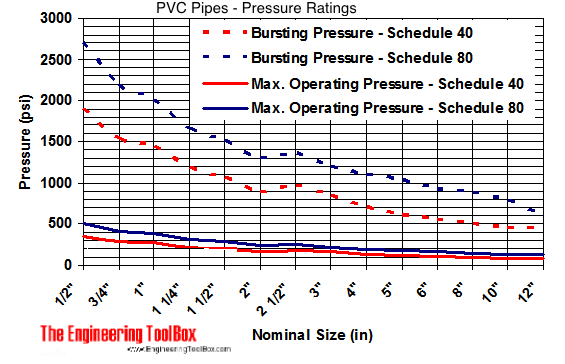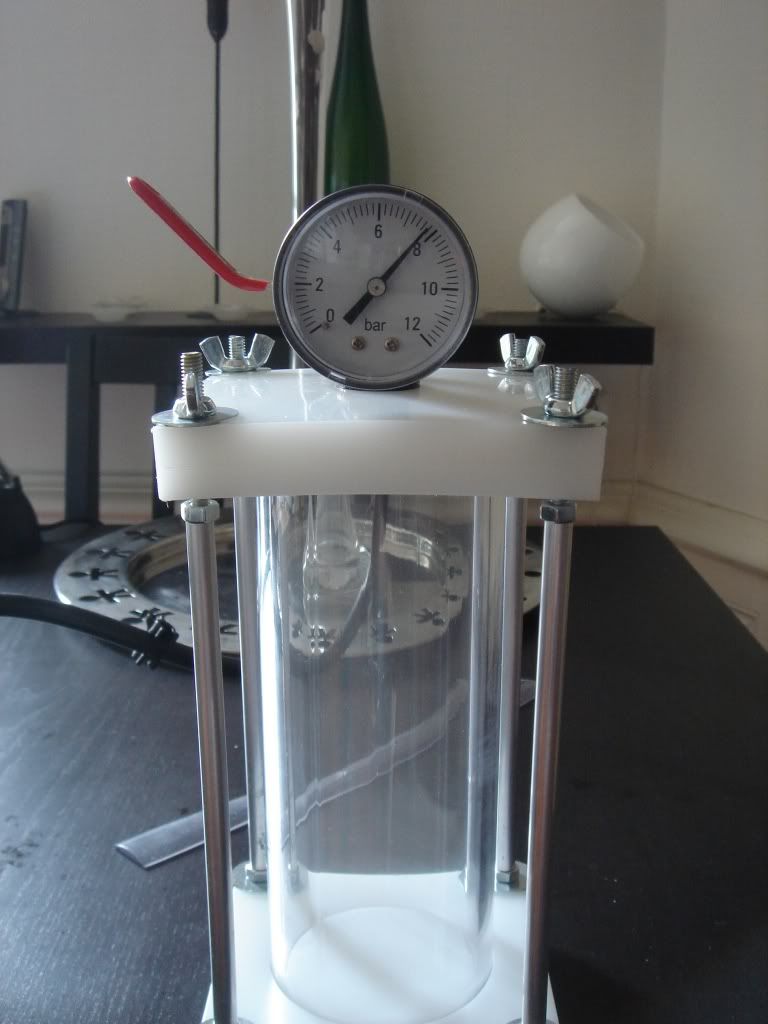The pictures are mostly self explanatory but I'll toss out a few helpful hints.
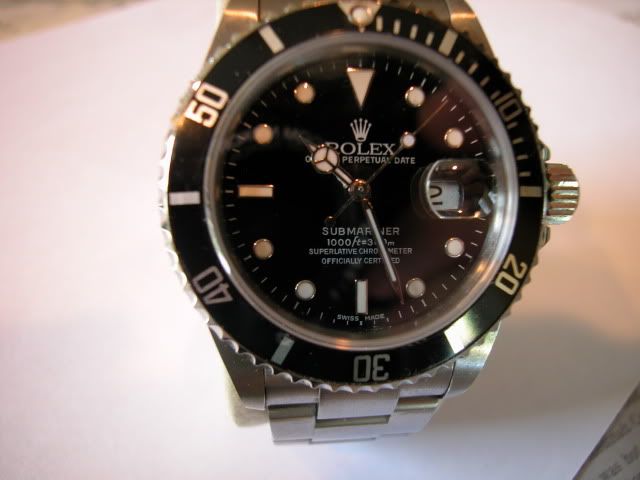
The old duct tape trick. Almost never fails.
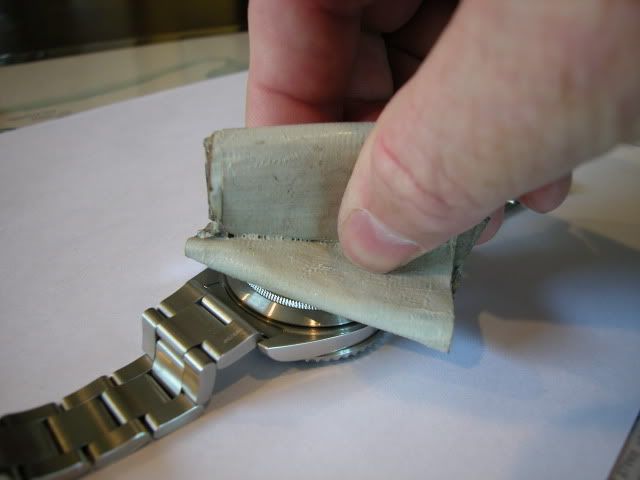
Using a straight pin to remove stem on the 2813 movement.
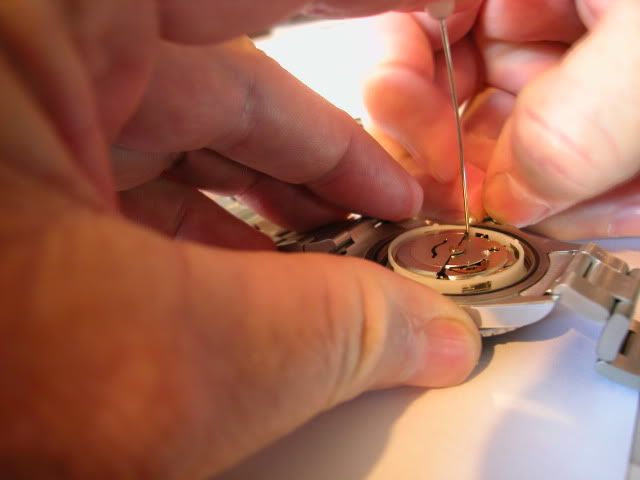
Silicone lube for o-rings from my pool supply store.
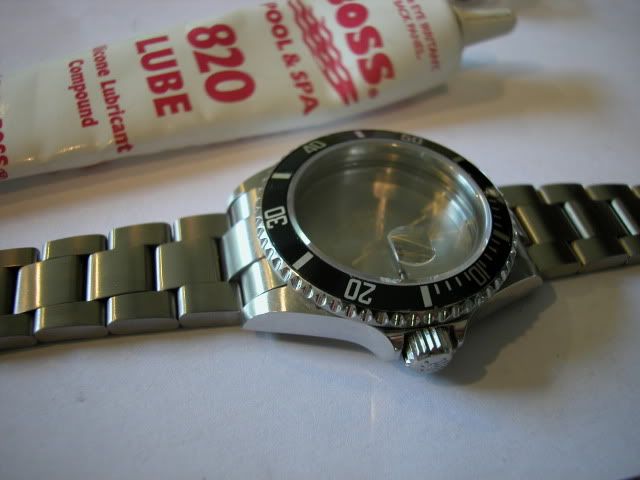
And my Home Depot special. The air valve is just a regular tire valve epoxied in after drilling a hole. It's put in from the other side and epoxied on both sides. This allows you to increase the pressure easily with a bicycle pump or compressor if you want to go higher. I can go to 10 atm using my compressor but I feel that 5 is good for everyday swimming and beach use.
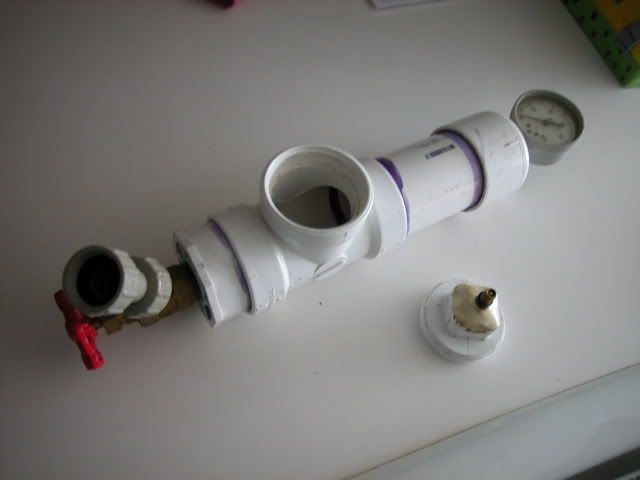
And an old compressor gauge from my spare parts bin.
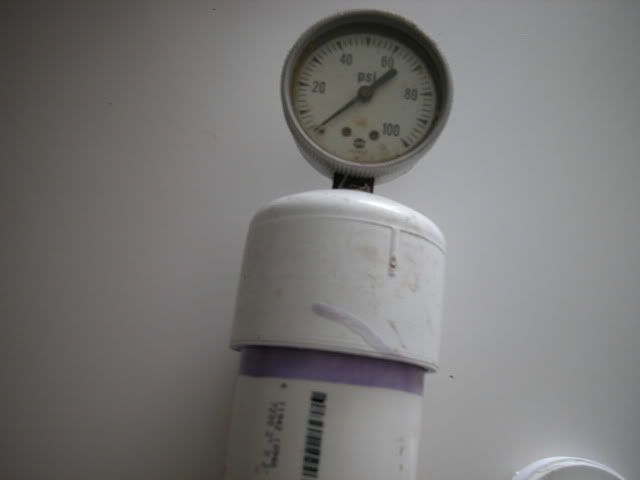
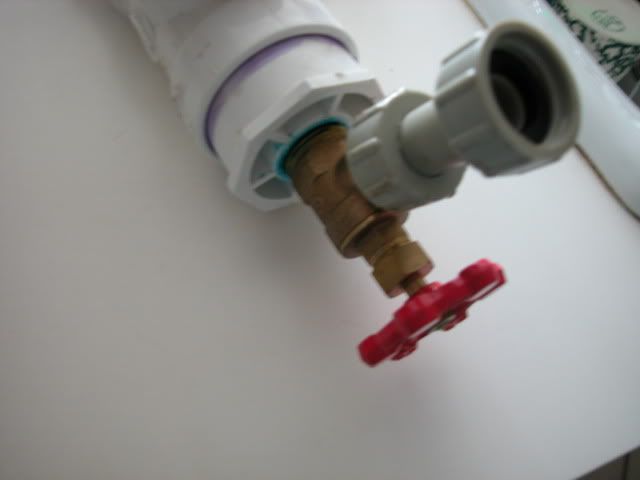
Just fill up the chamber with water and drop the watch in and seal it up. Use Teflon plumbers tape.
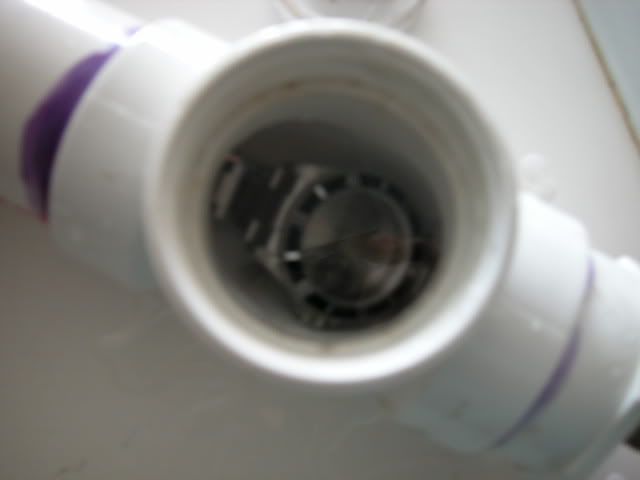
Most household pressure should be about 70 pounds which is almost equivalent to 5 atmospheres. Leave the watch in for 5 minutes to make sure, although generally you'll see the pressure go down quickly if there's a leak.
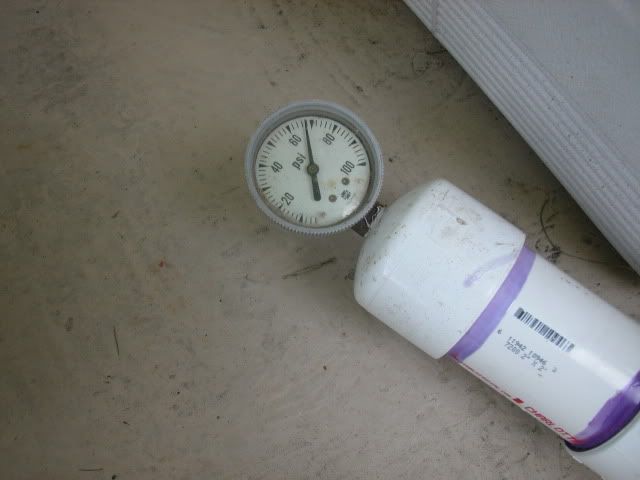
Release the pressure via either the tire valve or the hose bib before opening.
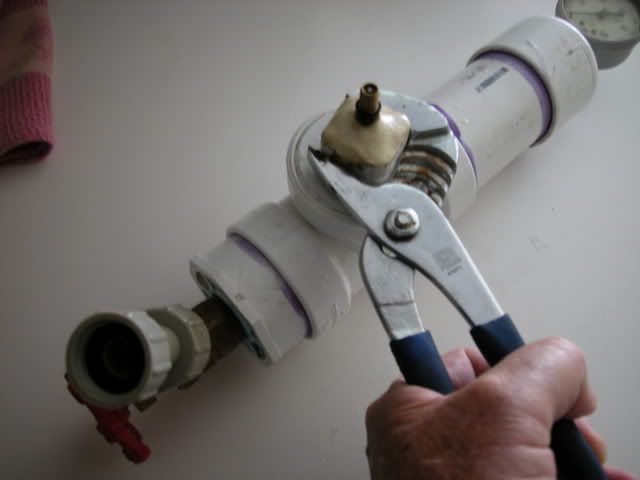
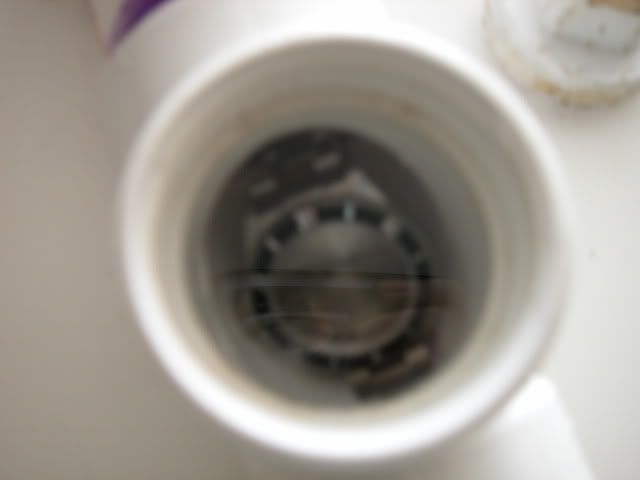
Another successful test! Dry with no sign of leaking.
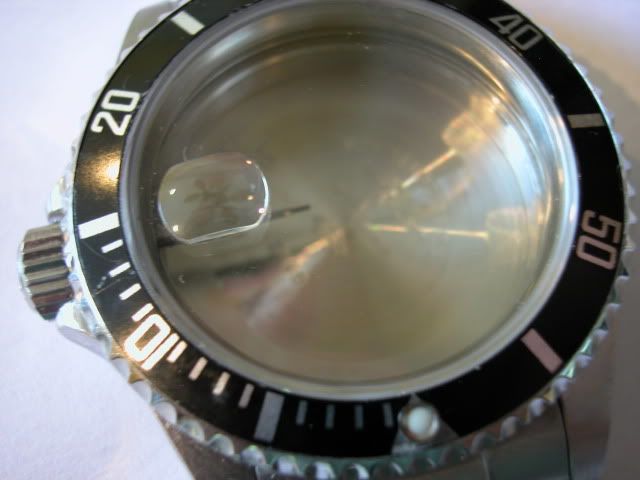

The old duct tape trick. Almost never fails.

Using a straight pin to remove stem on the 2813 movement.

Silicone lube for o-rings from my pool supply store.

And my Home Depot special. The air valve is just a regular tire valve epoxied in after drilling a hole. It's put in from the other side and epoxied on both sides. This allows you to increase the pressure easily with a bicycle pump or compressor if you want to go higher. I can go to 10 atm using my compressor but I feel that 5 is good for everyday swimming and beach use.

And an old compressor gauge from my spare parts bin.


Just fill up the chamber with water and drop the watch in and seal it up. Use Teflon plumbers tape.

Most household pressure should be about 70 pounds which is almost equivalent to 5 atmospheres. Leave the watch in for 5 minutes to make sure, although generally you'll see the pressure go down quickly if there's a leak.

Release the pressure via either the tire valve or the hose bib before opening.


Another successful test! Dry with no sign of leaking.


